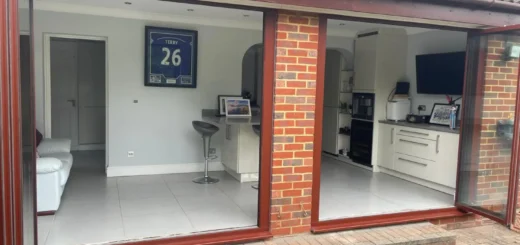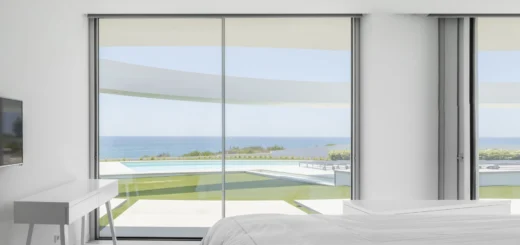The Pros and Cons of Sliding Patio Doors: A Practical Guide
Table of Contents
Introduction to Sliding Patio Doors
Sliding patio doors operate on a simple principle: glass panels glide horizontally along tracks, with at least one fixed panel and one moving panel.
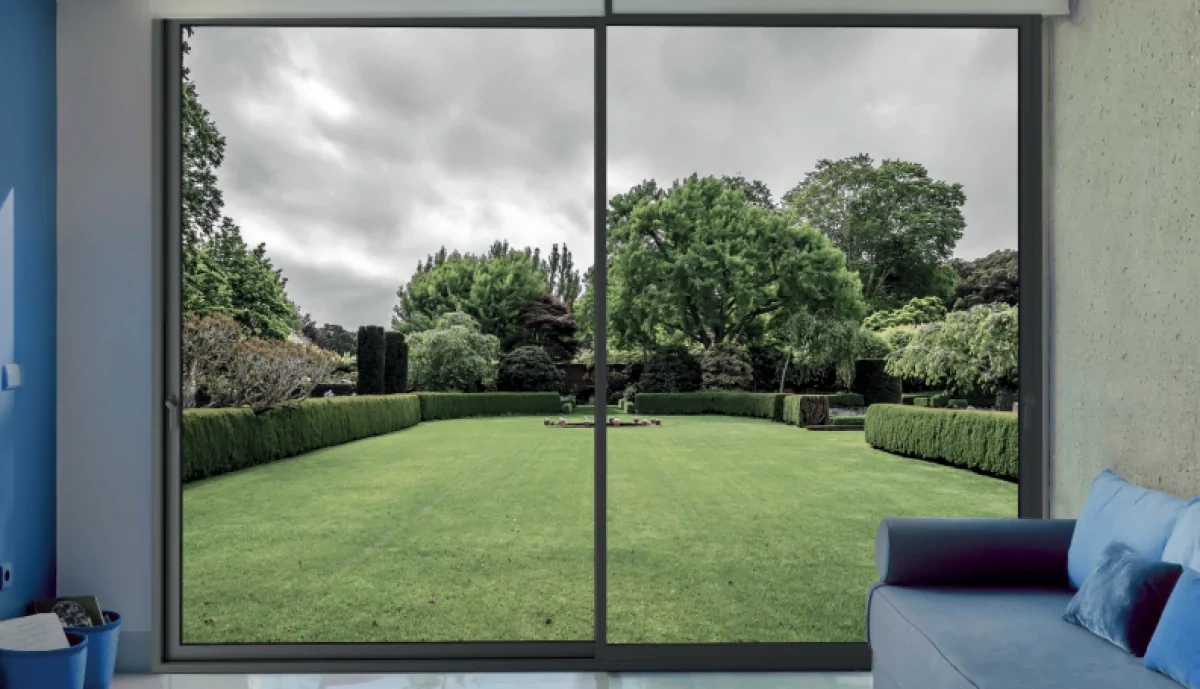
What Are Sliding Patio Doors?
Modern sliding patio doors come in two main types. Traditional designs feature wider frames and standard glass panels, while slimline sliding patio doors showcase narrower frames that let in more light.
Glass panels in sliding doors typically measure between 4 and 6 square metres, though exact sizes depend on your chosen configuration. Most systems use toughened safety glass as standard, with double or triple glazing to help maintain comfortable indoor temperatures.
Key Terms
Sightlines refer to the visible frame width when looking through the doors. Minimal frame sliding doors offer the slimmest sightlines, with some frames measuring just a few centimetres wide.
Double track systems allow two panels to operate independently, while triple tracks accommodate three panels. The term ‘interlock‘ describes where two door panels meet in the middle.
Rollers, tracks, and seals form the core working parts of any sliding door system. Quality rollers use stainless steel bearings to ensure smooth operation, while brush seals and gaskets around the frame keep out draughts and rain.
Multipoint locking mechanisms built into the frame secure the doors at multiple points when closed.
Popular Styles
Traditional sliding doors suit period properties and conventional home designs. The wider frames provide robust security and weather protection, though they reduce the glass area slightly.
Slim profile sliding doors suit contemporary buildings, offering clean lines and broader views. These systems often feature hidden frames and ultra-slim profiles, pushing the boundaries of what’s possible with modern glass technology.
Both styles can include features like soft-close mechanisms and thermal breaks – special insulating barriers within the frame that reduce heat loss. When comparing the pros and cons of sliding patio doors against other options, these features often become important factors in the final decision.
Pros and Cons of Sliding Patio Doors for Daily Use
Day-to-day living with sliding doors brings unique advantages and challenges worth weighing up before making your choice.
Advantages for Daily Living
Opening and closing sliding doors takes minimal effort, thanks to their weight distribution across precision-engineered rollers. A gentle push moves even large glass panels smoothly along their tracks, making them ideal for people of all ages and physical abilities.
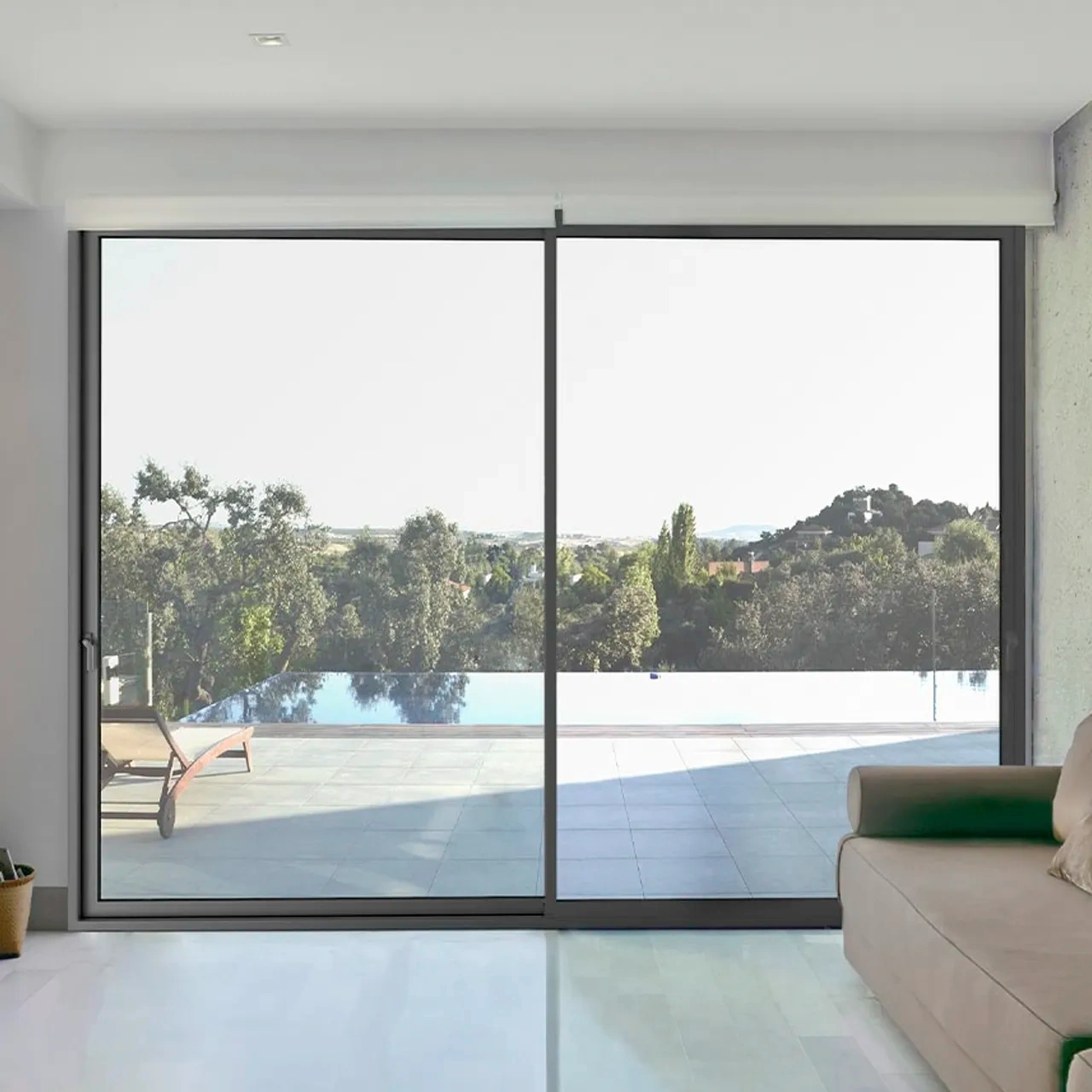
Modern locking systems provide excellent security without compromising ease of use. Multi-point locks engage at several points around the frame, while toughened glass and anti-lift mechanisms prevent forced entry attempts. Many homeowners appreciate how sliding doors lock automatically when closed, removing the need to lift handles or turn keys.
Natural light flows freely through the large glass panels, brightening interior spaces throughout the year. The fixed panels maintain views of the garden even when the doors remain closed, creating a strong connection with the outdoors during colder months.
Accessibility Features
Zero threshold sliding doors remove the step between indoor and outdoor spaces, making movement easier for wheelchair users and reducing trip hazards for everyone. The flush floor finish proves particularly useful when carrying items between house and garden.
Common Problems
Dirt and debris can collect in the bottom track, potentially causing sticking or jerky movement. Regular cleaning becomes essential to maintain smooth operation, particularly during autumn when fallen leaves might blow into the tracks.
Temperature changes can cause condensation to form on glass panels during cold weather. While double glazing reduces this issue, some condensation might still appear on particularly cold mornings, requiring occasional wiping down.
Sliding mechanisms can develop issues over time if not maintained properly. Rollers might need adjustment or replacement after years of use, while brush seals around the frames can wear down gradually, letting in draughts.
Daily Living Verdict
When comparing the pros and cons of sliding patio doors against other door types, their ease of use stands out as a major benefit. The simple sliding action makes them particularly suitable for busy areas like kitchens or living rooms where doors get frequent use.
The pros and cons of sliding doors become most apparent in daily routines. While the large glass panels and smooth operation improve daily life, the need for regular track cleaning and occasional maintenance requires some commitment from homeowners.
Security features prove reliable in real-world conditions, with insurance companies often viewing sliding doors favourably when properly installed. The combination of toughened glass, multi-point locking, and anti-lift devices creates strong protection against break-in attempts.
Weather resistance varies depending on the quality of installation and maintenance. Well-fitted doors keep out rain and wind effectively, though extreme weather might occasionally lead to drafts around the edges of moving panels.
Space and Layout Pros and Cons of Sliding Patio Doors
Sliding doors change how you can use your living space, bringing distinct advantages and limitations worth exploring.
Space-Saving Features
Moving panels glide parallel to fixed glass, requiring no swing space to open or close. This space-efficient design lets you place furniture right up to the doors without blocking their operation. Unlike hinged doors that need clearance arcs, sliding doors work well in tight spaces and narrow rooms.
The slim profile of sliding door frames takes up minimal wall space when open. Fixed panels remain flush against the frame, while moving panels stack neatly behind them. This compact operation proves particularly valuable in smaller homes where every centimetre counts.
Corner sliding doors open up room angles completely, removing the visual barrier between two walls. When open, these specialised systems create wide, unobstructed openings that make small spaces feel more generous. The panels slide away from the corner junction, revealing expansive views and improving access to outdoor areas.
Track Configurations
Multi-track systems offer flexibility in how doors open. Double tracks allow two panels to move independently, while triple tracks enable multiple opening configurations. The number of tracks influences the overall frame depth and how far the doors protrude into the room when stacked.
Layout Limitations
Fixed panels cannot be moved, limiting access width to roughly half the total door span. This restriction might pose challenges when moving large items through the doorway or hosting gatherings where wider access would help traffic flow.
Furniture placement requires careful planning. While items can sit close to the doors, they must not interfere with the sliding mechanism or block access to handles. Curtain poles and blinds need specific mounting positions to avoid catching on moving panels.
The pros and cons of sliding glass doors become apparent when considering room layouts. Track systems built into the floor create a permanent line across the room, potentially breaking up the visual flow of flooring materials. Some homeowners find this track line visually distracting in open-plan spaces.
Space Planning Summary
Sliding door installations require precise measurements and planning. The frame depth, track system, and panel sizes must work together within the available wall space. Load-bearing calculations determine whether additional structural support becomes necessary, particularly for wider openings.
The weight distribution of glass panels puts specific demands on the surrounding structure. Floor tracks need proper support to prevent sagging, while header beams must carry the load of top-hung systems without deflection. These structural requirements might influence where sliding doors can be installed.
Most sliding door configurations need at least one fixed panel, which determines the maximum opening width. The pros and cons of sliding patio doors often centre on this trade-off between space efficiency and opening size. While the doors save space during operation, they cannot open completely like some alternative door types.
Design Pros and Cons of Sliding Patio Doors
Visual appeal ranks high among factors that influence door choice, with each style offering distinct design characteristics.
Visual Benefits
Large glass panels create uninterrupted views of the outside world, bringing natural light deep into living spaces. Modern manufacturing techniques allow for wider panels than ever before, reducing the number of vertical divisions needed across the opening.
Frame thickness varies greatly between different door systems. Traditional aluminium frames might measure several inches across, while contemporary designs can achieve much slimmer profiles. These narrower frames increase the glass-to-frame ratio, creating cleaner sight lines and more modern appearances.
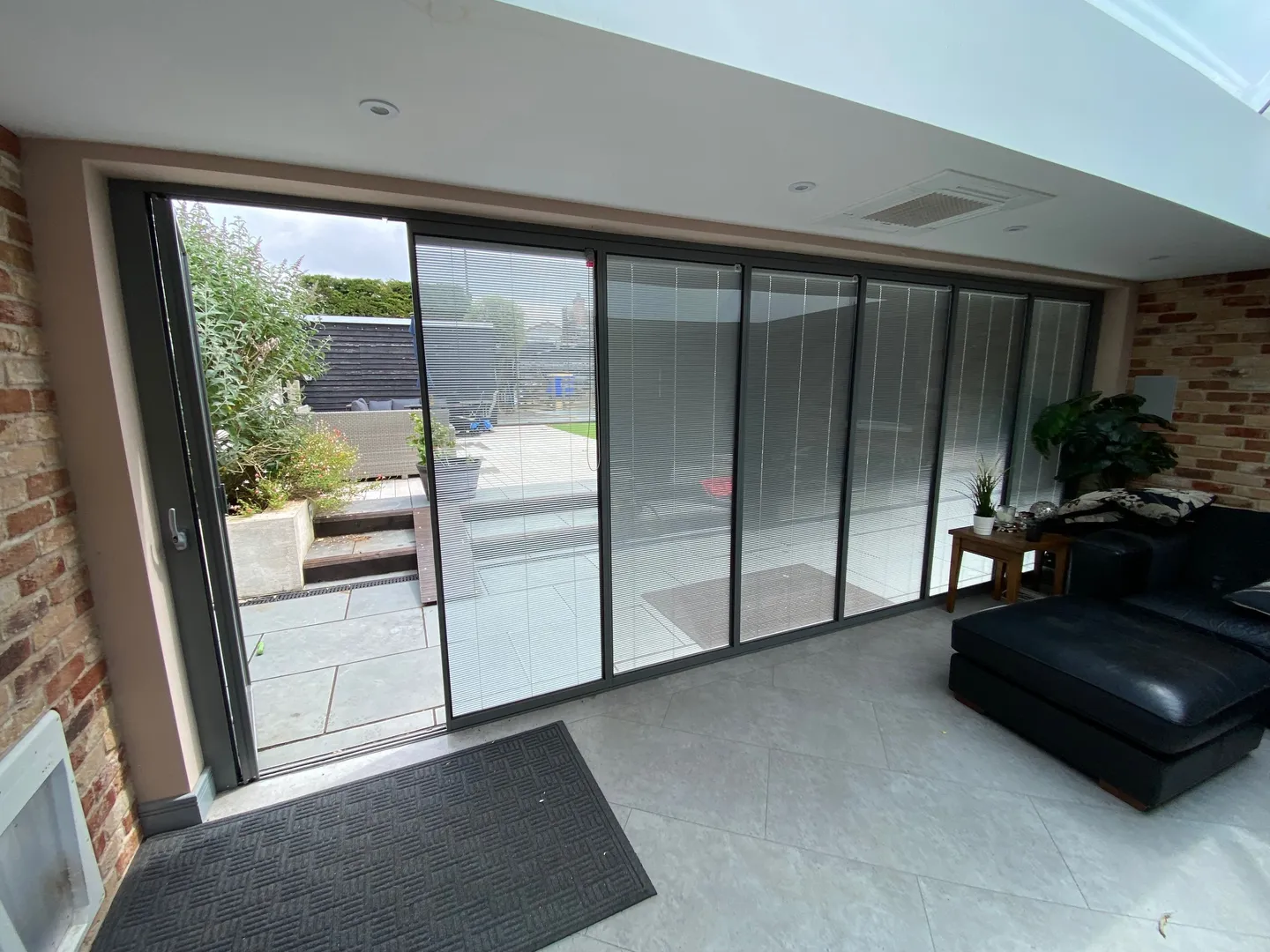
The simple, horizontal lines of sliding doors suit many architectural styles. Clean-lined frames complement contemporary buildings particularly well, though certain designs work equally effectively in period properties. The minimal visual interference of sliding systems allows the view beyond to take centre stage.
Glass Options
Different glass specifications change how sliding doors look and perform. Low-iron glass removes the slight green tinge found in standard glass, producing clearer views. Solar control coatings can reduce glare while maintaining clarity, and privacy glass options provide screening without sacrificing light transmission.
Design Compromises
Meeting stiles – where moving panels overlap – create unavoidable vertical lines in the view. The pros and cons of sliding patio doors become particularly noticeable at these junction points, where frame sections must be robust enough to house locks and maintain security.
Frame materials influence performance, not just appearance. Aluminium offers slim profiles but might not suit traditional homes. Timber frames provide classic appeal yet require more maintenance. uPVC options cost less but generally need thicker frames to maintain strength.
Examining the pros and cons of sliding glass doors highlights how structural requirements shape aesthetics. Larger panels need stronger frames, potentially increasing visible frame sections. Supporting beams above wide openings might need covering with bulkheads, impacting interior ceiling lines.
Design Impact Overview
Hardware choices play a big part in the overall look. Handle designs range from minimal finger pulls to substantial lever handles, while track covers and frame caps come in various finishes. These details contribute to whether doors appear premium or basic.
Panel configurations change the rhythm of frame lines across the opening. Three-panel arrangements create different visual patterns compared to four-panel setups. The position of fixed versus sliding panels establishes movement patterns that draw the eye in particular directions.
Paint and powder coating options allow frames to match or contrast with building materials. Matt finishes reduce visual impact, while metallic coatings make stronger statements. Dual-colour options permit different internal and external appearances, helping doors coordinate with various design schemes.
The relationship between glass reflectivity and frame finish deserves careful attention. Highly reflective glass combined with dark frames creates different effects than low-reflection glass with lighter frames. These interactions change throughout the day as light conditions shift.
Manufacturing tolerances become visible in the gaps between panels and frames. Higher-quality systems maintain consistent spacing, while lower-grade options might show more variation. These small details contribute to the overall impression of quality and craftsmanship.
Best Uses for Different Door Types
Choosing between door styles requires matching their characteristics to specific situations and requirements.
Ideal Sliding Door Scenarios
Rooms facing sheltered gardens often benefit most from sliding doors. Sliding patio doors show particular advantages in these protected spots, where wind exposure remains minimal and security concerns are lower.
South-facing installations make excellent use of sliding doors’ large glass areas. These orientations capture maximum sunlight throughout the year, while solar control glass helps manage heat gain during summer months. The fixed panels maintain views even in poor weather, unlike bi-folding systems that need complete closure during windy conditions.
Modern apartments and penthouses suit sliding doors particularly well. The pros sliding glass doors reveal strengths in high-rise settings, where wind resistance matters more than in ground-floor installations. The robust sealing systems handle greater air pressure differences effectively.
Weather Exposure
Coastal homes face unique challenges that influence door selection. The pros and cons of sliding patio doors become especially relevant in maritime environments, where salt spray and strong winds test weather resistance. High-quality sliding systems with appropriate surface treatments withstand these conditions better than many alternatives.
When to Choose Alternatives
Slide and stack doors offer advantages where complete opening spans matter most. Unlike sliding doors, these systems allow all panels to stack perpendicular to the frame, creating unobstructed openings. Entertainment spaces and indoor markets often benefit from this full-width access.
Properties with limited wall space beside openings might struggle with sliding door arrangements. The panels need room to stack when open, making other door types more suitable where adjacent walls house radiators or fitted furniture.
Period properties sometimes match better with traditional door styles. While sliding doors can work in older buildings, French doors or bi-folding systems might complement original architectural features more naturally.
Property-Specific Factors
Garden aspect and prevailing wind direction influence optimal door choices. North-facing gardens benefit from door systems that allow maximum light penetration, while west-facing installations might prioritise heat management features.
Room usage patterns determine the most suitable opening mechanisms. Kitchen-dining spaces often work well with sliding systems, allowing quick access while cooking. Living rooms might prefer bi-folding options for wider openings during parties.
Building regulations and planning restrictions can limit available choices. Listed buildings face strict controls on alterations, while modern developments might have specific requirements about thermal performance and safety glazing.
About SunSeeker Doors
With over 20 years of experience, SunSeeker Doors remains at the forefront of door design with our quality-tested patio doors and related products, including the bespoke UltraSlim aluminium slide and pivot door system, Frameless Glass Doors, and Slimline Sliding Glass Doors. All of our doors are suitable for both internal and external use.
To request a free quotation, please use our online form. You may also contact 01582 492730, or email info@sunseekerdoors.co.uk if you have any questions.



